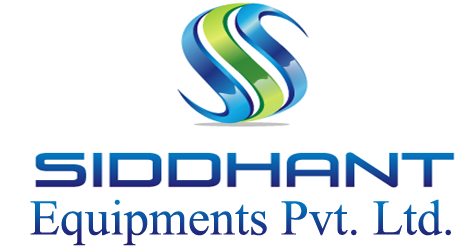As manufacturers, we utilize state-of-the-art technology and cutting-edge engineering practices to create cooling towers that are durable, reliable, and easy to maintain.
Our team of skilled technicians and engineers work tirelessly to ensure that every cooling tower we produce adheres to the highest quality standards.
We believe in delivering products that exceed our customers' expectations and provide long-lasting performance.
As suppliers, we have a wide range of cooling tower models available to suit various industrial requirements. Whether you need a compact cooling tower for a small-scale operation or a large-capacity tower for a heavy-duty industrial application, we have the perfect solution for you. Our team of experts can assist you in selecting the right cooling tower that meets your specific needs and budget.
As exporters, we take pride in serving clients not only in Pune and Maharashtra but also across India and around the world. With our extensive network and efficient logistics, we ensure timely delivery of our cooling towers to our clients' doorstep. Our commitment to customer satisfaction has earned us a reputation as a trusted and reliable partner in the cooling tower industry.
In addition to manufacturing, supplying, and exporting cooling towers, we also provide comprehensive after-sales support and maintenance services. Our team of experienced technicians is always available to assist you with any technical issues or questions you may have. We believe in building long-term relationships with our clients and strive to provide the highest level of customer service.
So, whether you are in need of a cooling tower for your power plant, chemical industry, HVAC system, or any other industrial application, Siddhant Equipments is your go-to partner. Contact us today to discuss your cooling tower requirements, and let us provide you with innovative, reliable, and energy-efficient cooling solutions that will help drive your business forward.
What is a Cooling Tower?-
A cooling tower is a device used to remove heat from a building or industrial process by spraying water down through the tower to exchange heat into the inside of the building. Air is drawn through the tower, and as it passes through the falling water, heat is exchanged and some of the water evaporates. The cooled water is collected at the bottom of the tower and pumped back to the condenser or process equipment where it absorbs heat. It is then pumped back to the cooling tower to be cooled once again
Applications of Cooling Towers
Cooling towers are used in a variety of applications, including cooling the circulating water used in oil refineries, petrochemical and chemical plants, thermal power stations, nuclear power stations, and HVAC systems for cooling buildings. They are also used in industrial facilities and manufacturing facilities to prevent equipment from overheating. Cooling towers are essential for maintaining the temperature of process water and ensuring the efficient operation of various systems
Importance of Cooling Towers
Cooling towers play a crucial role in maintaining the temperature of equipment and processes. They help remove heat generated by air conditioning equipment and industrial processes, ensuring that the equipment operates efficiently. By continuously cooling the heated equipment or condensers, cooling towers contribute to the overall comfort and functionality of buildings and industrial facilities
Common Issues with Cooling Towers-
Cooling towers, which are heat exchangers used to cool large buildings and remove heat from industrial processes, can face a range of issues that can result in inefficient cooling or damage. Here are some common problems that can occur with cooling towers:
- Water Treatment Issues: Cooling towers rely on water evaporation to remove waste heat. However, problems can arise if the water in the cooling towers is not properly treated. Common water treatment issues include biological contamination, corrosion, fouling, and scaling
- High Water Costs: Inefficient cooling tower systems can lead to high water costs for facilities. If the systems are running inefficiently, it can result in increased water usage and waste. This is especially problematic considering the increasing water scarcity and environmental concerns, which have led to more stringent regulations for water discharge and waste management
- Environmental Regulations: Local governments have imposed stricter regulations on water discharge and waste management. Failure to meet these requirements can result in fines from local agencies. To avoid penalties, facilities using cooling towers need to ensure compliance with these regulations
- Scaling: Scaling occurs when the concentration of dissolved solids in the cooling tower water becomes greater than their solubility. Calcium sulfate, calcium phosphate, and other calcium salts commonly cause scale, as well as certain materials such as silica or silicates when found at high concentrations. Scaling can reduce the efficiency of the cooling tower and increase energy consumption
- Corrosion: The combination of air, water, chemicals, and heat in cooling towers can create a corrosive environment. Some cooling tower components are more susceptible to damage than others. Corrosion can lead to perforations, holes, and other damage in the cooling tower system
- Fouling: Fouling occurs when dirt, dust, debris, or other contaminants accumulate on the heat exchange surfaces of the cooling tower. This can reduce heat dispersal and tower efficiency, leading to increased energy consumption and costs




